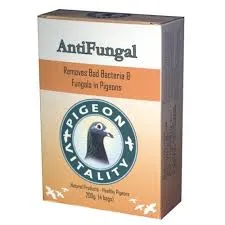
דצמ . 12, 2024 11:03 Back to list
china mycotoxins
The Impact of Mycotoxins in China A Growing Concern
Mycotoxins are naturally occurring toxic compounds produced by certain molds that can contaminate food and feed. Their presence poses significant health risks to humans and animals, leading to increased interest in mycotoxin management, particularly in China, where agricultural production is vast and diverse.
Understanding Mycotoxins
Mycotoxins develop under specific environmental conditions, including humidity and temperature, which are prevalent in many parts of China. The most common types of mycotoxins include aflatoxins, ochratoxins, fumonisins, and zearalenone, each linked to serious health concerns ranging from liver damage to immunosuppression and even cancer. Given the size of China's population and its reliance on agriculture, addressing mycotoxin contamination is critical for public health and food safety.
Agricultural Practices and Mycotoxin Contamination
China is one of the largest producers and consumers of grains, nuts, and other agricultural products highly susceptible to mycotoxin contamination. Common crops such as corn, rice, peanuts, and wheat are often affected. Poor agricultural practices, including inadequate drying methods, improper storage conditions, and a lack of pest control, exacerbate the risk of mold growth and subsequent mycotoxin production.
In addition to environmental factors, the country’s rapidly changing climate has introduced new challenges. Increased rainfall and rising temperatures create a more favorable atmosphere for mold proliferation. Consequently, the incidence of mycotoxin contamination in food products has been on the rise, necessitating urgent attention from policymakers, farmers, and food manufacturers.
Health Implications
china mycotoxins

The health implications of mycotoxins in food are profound. Chronic exposure to these toxins can lead to severe health conditions. For instance, aflatoxins, particularly prevalent in peanuts and corn, are carcinogenic and have been linked to liver cancer. Moreover, mycotoxins can weaken the immune system, making individuals more susceptible to infectious diseases.
In recent years, outbreaks of mycotoxin-related illnesses have prompted health authorities in China to pay closer attention to the problem. Reports indicate that mycotoxin contamination is not limited to rural areas; urban populations are also at risk due to food supply chains that can cross-contaminate products at various stages, from harvest to processing and retail.
Regulatory Measures and Strategies
To combat mycotoxin contamination, China has implemented several regulatory measures. The government has established maximum allowable limits for specific mycotoxins in food products, and continuous monitoring systems have been put in place to oversee compliance. Additionally, educational programs for farmers regarding best practices for crop management and storage are being promoted.
Research institutions and universities are also engaged in studying mycotoxins, focusing on detection methods, risk assessment, and the development of mycotoxin-resistant crop varieties. Innovative technologies, such as rapid test kits for on-site detection and biocontrol methods using non-toxic strains of fungi, are being researched to manage and mitigate this issue.
Conclusion
As one of the world's largest producers and consumers of agricultural products, China faces significant challenges concerning mycotoxins. With risks surrounding health and food safety on the rise, collaborative efforts among government agencies, agricultural sectors, and scientific communities are essential to address this pressing issue. Continued investment in research, education, and regulatory enforcement will be vital to controlling mycotoxin contamination and ensuring a safe food supply for the country’s immense population. Awareness and proactive measures can help mitigate the risks, ensuring that consumers are protected from the dangerous effects of these hazardous compounds.
-
China Salivation AI with GPT-4 Turbo Features
NewsAug.01,2025
-
Epic Sepsis Factories: AI-Driven Detection with GPT-4 Turbo
NewsJul.31,2025
-
Acute Salpingitis and Oophoritis AI Factory
NewsJul.31,2025
-
Premium China Bacillus Subtilis Supplier & Factory Solutions
NewsJul.30,2025
-
Premium Avermectin Supplier in China | Custom Solutions Available
NewsJul.29,2025
-
China Bacillus Subtilis Supplier - Custom Factory Solutions
NewsJul.29,2025




